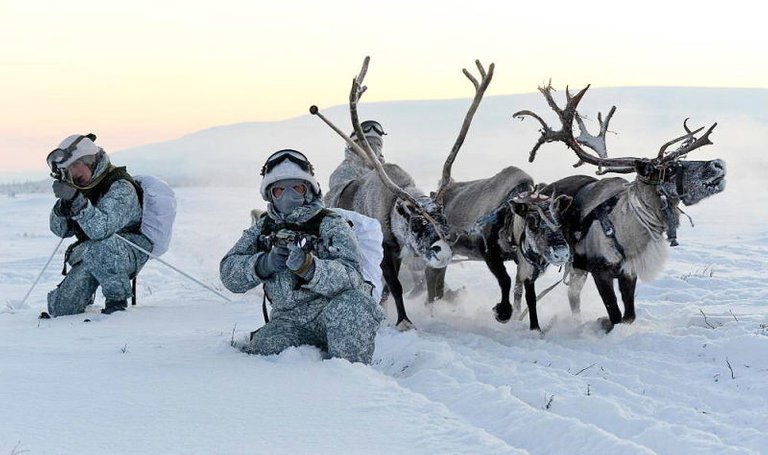
Although we mostly associate a potential NATO-Russia conflict with Europe, the Arctic is quickly becoming a second front. The Russian strategy bets on receding ice sheets revealing or providing easier access to oil, so the Kremlin's been building new military bases and creating Arctic warfare units. These military assets in the Arctic will allow the Kremlin to pressure the U.S. from the north, should a war break out.
After Russian leaders made the decision to militarize the Arctic, the U.S. and NATO have followed suit. (The Defense Department published an Arctic Strategy in 2013, and then updated in late 2016.) Earlier this year, U.S. Northern Command began a new military study of the Arctic. Due to be completed this fall, the "strategic military estimate" is expected to aid commanders in campaign or operational planning. And last month my company reported that senior Air Force leaders were traveling to the Arctic to study changing environmental conditions (although at the time I predicted that it had more to do with the Russians than with the environment). The Air Force reports that the trip was dubbed the Air Force Arctic Security Expedition, and included 19 general officers traveling to Alaska, Canada, and Greenland for the express purposes of determining how best to counter the Russian military buildup.
This week, those same Air Force leaders are drafting a concept of operations for the region. Although there is no date set for the completion of the study, Air Force generals are hopeful it will be complete by Spring 2018. Current Air Force plans include deploying over 100 additional F-22A Raptors and F-35A Joint Strike Fighters to Alaska in the next five years. One Air Force general recently said, "Alaska is a critical enabler. The Air Force is already in support of the DOD strategy in putting some of our greatest technology up there. So I think we're on track with where we're going. So, we'll do the rest of it and see whether there are shortfalls and where we can fill in any gaps."
Continuing on to describe a potential conflict, the general said, "In a resource constrained environment, what are the resources that would be required to do [Arctic operations] the old way? Are there new ways of doing business? As you look at it, what are our vulnerabilities? What are our challenges? What are our opportunities? ... Operating up there is expensive, very expensive.”
Meanwhile Russia has two new military exercises, this time testing its nuclear missiles forces and armor units. Following last month's Zapad 2017 which featured at least one ICBM test launch, now over 60 Topol, Topol-M, and Yars ICBM launchers are involved in one exercise, and 250 T-72 tanks are involved in another, separate exercise. Consider it Russia's sure sign that it's prepared for the worst. (It should be noted that the tank exercise, which took place near the border of Kazakhstan, is the largest tank exercise in 30 years.)
Outlook: My outlook remains about the same this week. U.S. and NATO military leaders are undoubtedly concerned about a war, but the situation remains stable. Military exercises serve two purposes. First, they're scrimmages for troops to gain expertise in warfighting at or near real-time. And secondly, they're messages to the other side that units are ready for war; a message that acts as a sort of deterrent in itself. There's an old Russian saying that goes, "Probe with bayonet. If steel, stop. If mush, push." NATO is trying its best to show steel to the Russian military, but as we've seen and discussed in this report, NATO still struggles.
@culper is a former intelligence analyst who now tracks the risk of World War 3.
cc: @stevescoins